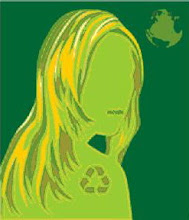
The world really has two different meanings for the word fruit. There is the use of the word when you go to the grocery store, and then there's the use of the word by a botanist.
In the grocery store, we generally understand a fruit to be a natural plant product that is sweet, and a vegetable to be a natural plant product that is not sweet. In this standard definition, apples, strawberries, grapes and bananas are all fruits, while green beans, tomatoes, squash and potatoes are all vegetables.
Technically, however, this layman's definition is a bit off. The Encyclopedia Britannica sums it up like this:
Fruit - in its strict botanical sense, the fleshy or dry ripened ovary of a plant, enclosing the seed or seeds. Thus, apricots, bananas, and grapes, as well as bean pods, corn grains, tomatoes, cucumbers, and (in their shells) acorns and almonds, are all technically fruits.
This definition of fruit is very broad, and encompasses almost everything that contains seeds.
Vegetables, then, are everything that's left. This includes:
- Root crops like potatoes, carrots and turnips
- Bulbs like onions and garlic
- Stems like asparagus
- Leaves like lettuce and cabbage
- Flowers like broccoli and cauliflower
In other words, things that do not contain seeds are vegetables, in the technical sense. Everything else is a fruit.
But... In 1887, the tomato reached the U.S. Supreme Court. The ruling? Vegetable. So legally, it seems, the tomato is not a fruit.
Pic taken from here
full story »»










